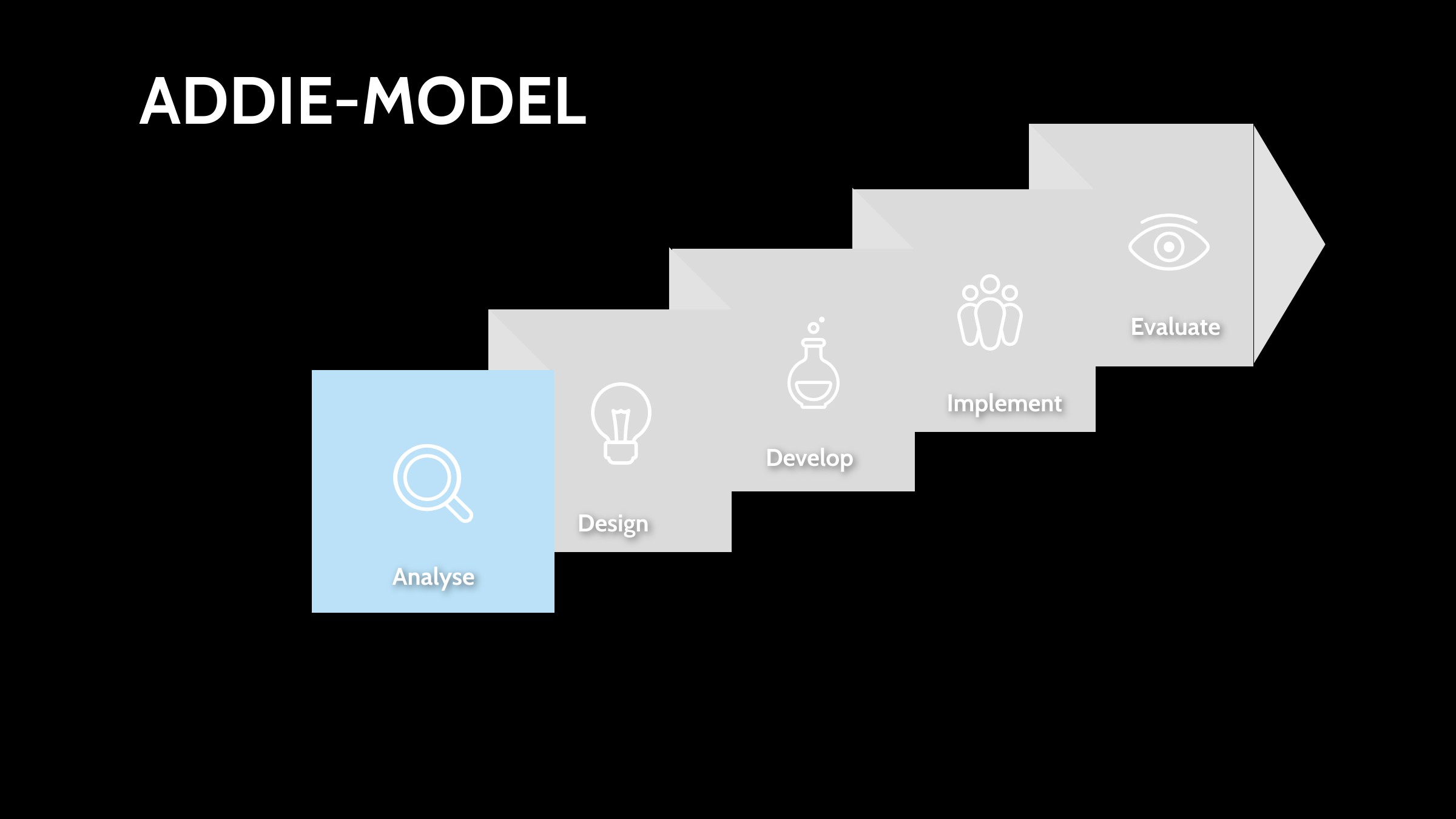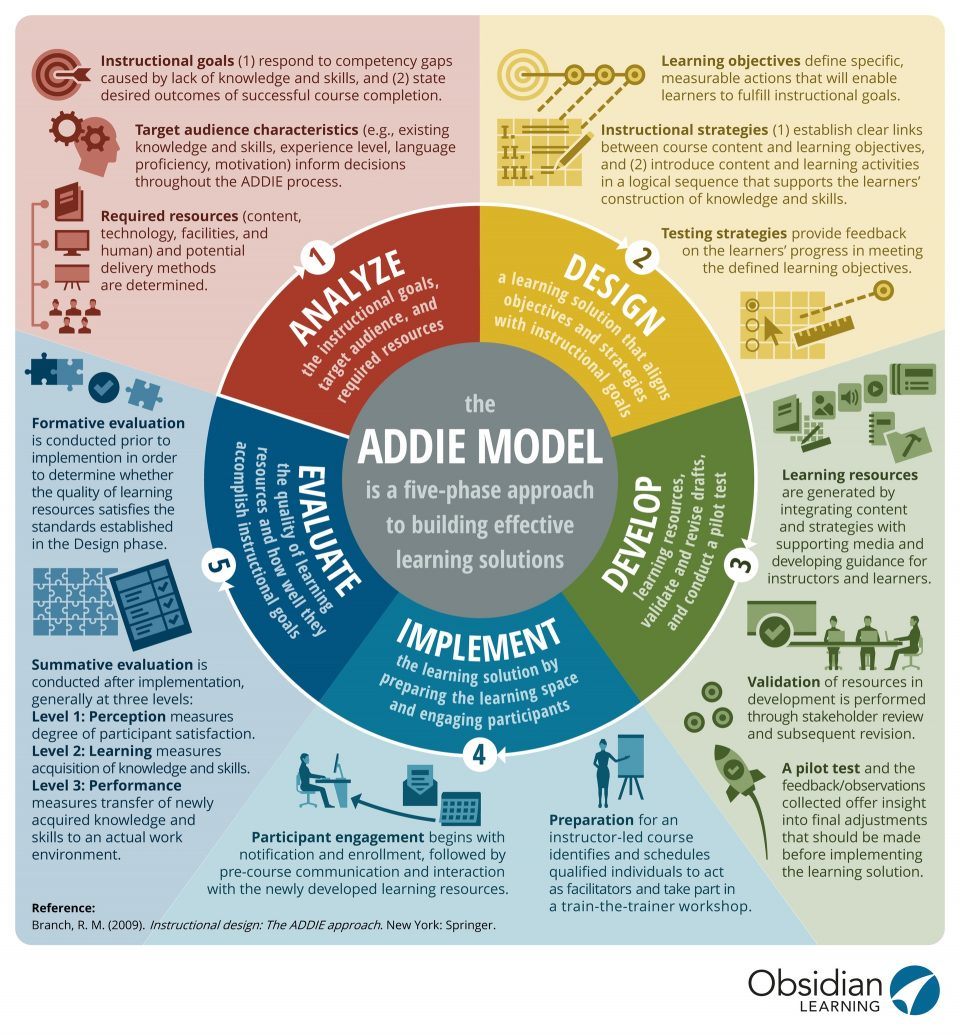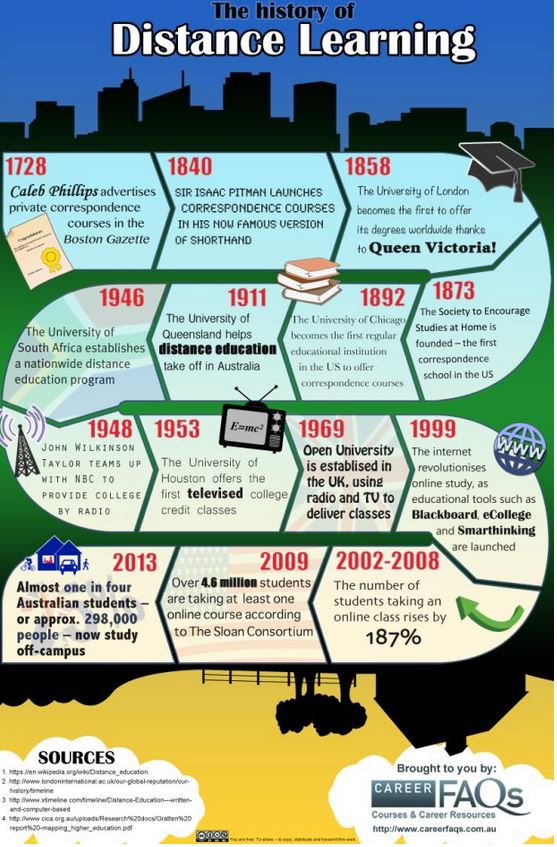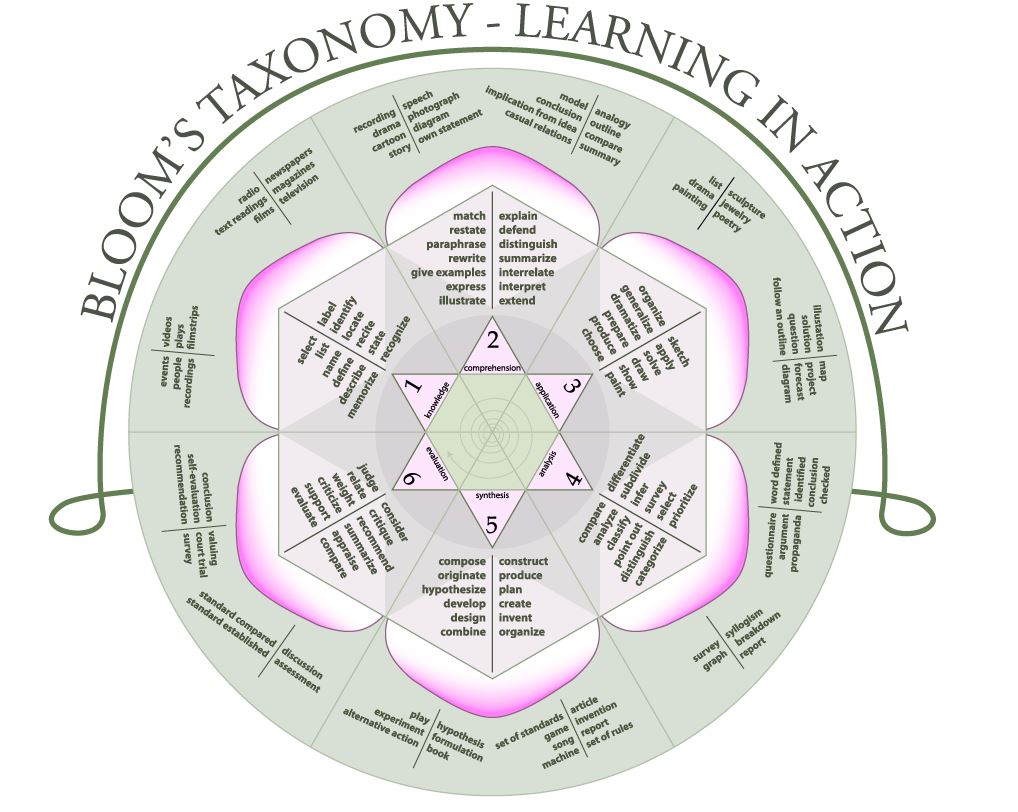Phase 1 - Analyse Your Students Needs

Introduction
Well, we are sure you already know a lot about the online world. But how can you develop effective online courses? The results of the self-assessment survey with film educators shows us the complexity of transferring face-to-face teaching into an online format. The survey participants expressed a need to know how to create and then incorporate online teaching elements into their general teaching practices. The right choice of tools and strategies that lecturers could use to interact with their students was one of the most popular requirements. The ADDIE Model proved to provide an excellent framework, which is certainly the most popular online instructional design model. In English-speaking areas, the process of systematically planning training units and environments is called instructional design (ID).
The ADDIE model is a process commonly used by educational developers and instructional designers to design and build effective learning environments. This model provides a step-by-step process to help you plan your online course. Instructional design not only aims at the design of technical tools, but also at the planning, analysis, design and evaluation of teaching and learning processes in general. The steps are not always linear. Often it is necessary take a step back, skip and repeat. Instructional design is not a single school of thought. Different models based on different learning theories and insights from pedagogy, information and communication technology, educational research and management methods exist.
In this infographic you can learn more about the origins:
Most models include a common set of basic stages in the instructional design process, similar to those identified as ADDIE. Each letter stands for a different stage in the process of developing an online course:
- Analysis
- Design
- Development
- Implementation
- Evaluation
In detail the acronyms mean:
1. Analysis
A detailed analysis should be at the beginning of your online project. There are two key types of analysis to perform:
- Course needs analysis
- Target group analysis
2. Design
The term design does not mean the visual design, it means the course framework. This refers to the didactics and methodology of your course. What do you want to achieve and how?
While reading this, take a moment to think about your course. Think about your strategy. Outline the elements of your course. You could start writing a storyboard, a so-called script for your online format. At this stage you also think about the platform.
3. Development
In this phase you will move on to the heart: the production of your online content (text, audio, video, etc.). How could your content be integrated on the platform? Don't forget to pay attention to the visual design (fonts, colours, sizes, ...). This would be the right time to test your content through a prototype.
4. Implementation
Once the online format is developed (don't forget to make an initial pilot version or prototype) you can onboard your students. Now you can deliver your course content via an online conference room (e.g. Zoom).
5. Evaluation
When your online format has been "run", you are ready to evaluate it. What results have you achieved? Were the participants satisfied? What did they learn? Compare the results of the needs analysis with the completed course:
Were your (and the students) expectations met? What needs to be improved?
Click on the picture to discover more.
 Well, now you have the first insight: The five phases of the ADDIE model. Each phase ensures that you have developed a high-quality online format that is tailored to your learners. We recommend working through the model in chronological order from analysis to evaluation. However, ADDIE is designed to be a flexible, continuous process of improvements and iterations. So you can use it in the way that you need to analyse each individual element. In this context see also our self-directed learning materials. Our toolkit is structured in a way that you could click on each stage to learn more about the different steps. Keep in mind to think about collaboration opportunities for your students at this stage. Don't forget to make use of our technical toolkit, for bringing your course to life online. In case you have questions about data protection and the use of images, which is important in the field of filmmaking, take a look at our copyright section.
Well, now you have the first insight: The five phases of the ADDIE model. Each phase ensures that you have developed a high-quality online format that is tailored to your learners. We recommend working through the model in chronological order from analysis to evaluation. However, ADDIE is designed to be a flexible, continuous process of improvements and iterations. So you can use it in the way that you need to analyse each individual element. In this context see also our self-directed learning materials. Our toolkit is structured in a way that you could click on each stage to learn more about the different steps. Keep in mind to think about collaboration opportunities for your students at this stage. Don't forget to make use of our technical toolkit, for bringing your course to life online. In case you have questions about data protection and the use of images, which is important in the field of filmmaking, take a look at our copyright section.
Action: Let's crack on and start with the first phase - Analysis
The analysis phase starts by assessing the requirements of your course, your teaching objectives and the expectations and needs of your students. This phase implies a complete analysis of the teaching and learning targets. At this point, ask yourself questions about your course:
- What problem are you trying to solve?
- What are the expectations?
- Do your students all have access to the internet?
- What are the limiting factors such as technical resources, time and financial budget?
- Who is the target group?
- What are the demographics of your learners? (age, education level, background, etc.)?
- Are your students familiar with digital learning? Do they have prior knowledge of the course topic? How much time can they devote to learning? Are there any obstacles?
- Will the students be obliged to attend the course? Do they expect the course to solve a problem, help them learn a new skill, or move them up in their organisation?
- What would you like to see the students achieve?
- How do your students prefer to learn?
To read more about learner types, watch the video Introduction to the six learning types with Professor Diana Laurillard.
Dealing with these questions, will help you develop your framework. This article shows an useful overview about instructional methods for online teaching. The article deals with the differences between online and traditional classroom instruction. It supports teachers to deliver information and interact with their students.
How other film teachers have dealt with the switch to online classes
The lockdown has affected us all. Let’s take a view back to 2020 and explore how other film teachers have dealt with the online transformation. Click on this link and you will find a resource of courses and platforms for cineastes and filmmakers which is run by professional filmmakers. We enjoyed the videos on film history, film review and film production. We especially liked the MIT's free video lecture series about film history that could you share with your online students.
How thrilling the history of distance education can be
We can imagine that you might want to find out a bit more about online teaching. When was online teaching launched? We are not going to jump into the cave drawings of our ancestors, but for now we can tell you that distance learning dates back several centuries. Distance-Learning is not a modern phenomenon. The oldest remote learning universities are in countries with the longest distances. The history of distance education is fascinating and began in Boston in the year 1728 with the Method of Short Hand, perhaps even before with the explorers... So come with us on an exciting journey to the roots of e-learning:
How to set learning goals
Start planning the framework of your online course now. Your course can include all online formats - from webinars where you speak in front of the camera to asynchronous discussions in a forum. Be sure to give your course a strong title!
Use these questions to lead you in your planning.
- Which target group do you want to address?
- What content do you want to convey?
- Which digital tools can you already consider?
The planning should be understood as a process and will become something you focus on more as you become more familiar with more digital tools and techniques. You do not need to make a final decision at this point, as you will learn more about online elements in this toolkit. Following your initial analysis, you will already have made some progress with your online course and have developed a basic structure.
The next step is to precisely define your training goals:
What do you want your students to be able to do after completing your course? Finally, how can you measure the success of the course?
To achieve your training objectives, use Bloom's learning goal taxonomy. Benjamin Bloom was an American psychologist, educationalist and president of the American Educational Research Association. In 1956, he published a framework for categorising educational objectives: Taxonomy of Educational Objectives. The framework, devised by Bloom and his colleagues, consists of six main categories: Knowledge, Understanding, Application, Analysis, Synthesis and Evaluation. The categories following knowledge were presented as skills and abilities, where knowledge was the required precondition for putting these skills and abilities into practice. Although each category contained sub-categories, all on a continuum from simple to complex and from concrete to abstract, the taxonomy is organised according to the six main categories.
In this taxonomy, the learning goals build upon each other. The previous goal is the starting point for the next one. Always make sure that you use the first stage to build the foundation for the next stage. Make the goals as action- and practice-oriented as possible. For example, you can set a learning goal for each unit or theme. At the same time, think about how you can measure each learning goal. What do you want your learners to know after your lessons and how you can measure it?
The objectives build up in the following order:
- remember
- understand
- apply
- analyse
- evaluate
- create
Here you can see a framework or sample template for your course planning.
Click on the Bloom's Taxonomy illustration for more in depth information about setting learning goals.
To plan and structure the learning journey of your students use this video about Bloom's Taxonomy: Why, How, & Top Examples.
Why not take a break now to reflect on how you see yourself teaching online?
Once you have set your course objectives, we recommend moving on to the next step: PHASE 2 - DESIGN.




